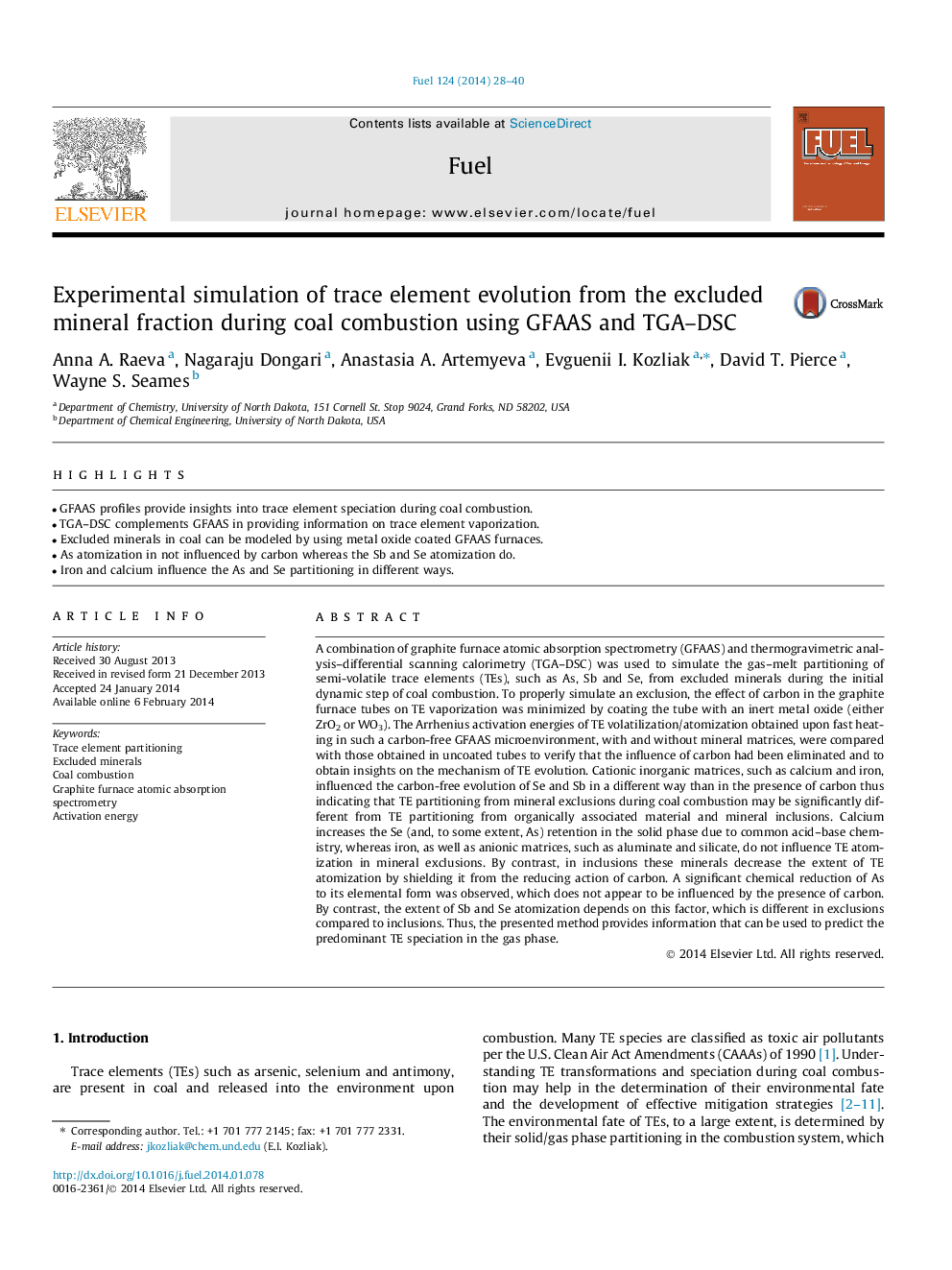| کد مقاله | کد نشریه | سال انتشار | مقاله انگلیسی | نسخه تمام متن |
|---|---|---|---|---|
| 6637926 | 461144 | 2014 | 13 صفحه PDF | دانلود رایگان |
عنوان انگلیسی مقاله ISI
Experimental simulation of trace element evolution from the excluded mineral fraction during coal combustion using GFAAS and TGA-DSC
دانلود مقاله + سفارش ترجمه
دانلود مقاله ISI انگلیسی
رایگان برای ایرانیان
کلمات کلیدی
موضوعات مرتبط
مهندسی و علوم پایه
مهندسی شیمی
مهندسی شیمی (عمومی)
پیش نمایش صفحه اول مقاله

چکیده انگلیسی
A combination of graphite furnace atomic absorption spectrometry (GFAAS) and thermogravimetric analysis-differential scanning calorimetry (TGA-DSC) was used to simulate the gas-melt partitioning of semi-volatile trace elements (TEs), such as As, Sb and Se, from excluded minerals during the initial dynamic step of coal combustion. To properly simulate an exclusion, the effect of carbon in the graphite furnace tubes on TE vaporization was minimized by coating the tube with an inert metal oxide (either ZrO2 or WO3). The Arrhenius activation energies of TE volatilization/atomization obtained upon fast heating in such a carbon-free GFAAS microenvironment, with and without mineral matrices, were compared with those obtained in uncoated tubes to verify that the influence of carbon had been eliminated and to obtain insights on the mechanism of TE evolution. Cationic inorganic matrices, such as calcium and iron, influenced the carbon-free evolution of Se and Sb in a different way than in the presence of carbon thus indicating that TE partitioning from mineral exclusions during coal combustion may be significantly different from TE partitioning from organically associated material and mineral inclusions. Calcium increases the Se (and, to some extent, As) retention in the solid phase due to common acid-base chemistry, whereas iron, as well as anionic matrices, such as aluminate and silicate, do not influence TE atomization in mineral exclusions. By contrast, in inclusions these minerals decrease the extent of TE atomization by shielding it from the reducing action of carbon. A significant chemical reduction of As to its elemental form was observed, which does not appear to be influenced by the presence of carbon. By contrast, the extent of Sb and Se atomization depends on this factor, which is different in exclusions compared to inclusions. Thus, the presented method provides information that can be used to predict the predominant TE speciation in the gas phase.
ناشر
Database: Elsevier - ScienceDirect (ساینس دایرکت)
Journal: Fuel - Volume 124, 15 May 2014, Pages 28-40
Journal: Fuel - Volume 124, 15 May 2014, Pages 28-40
نویسندگان
Anna A. Raeva, Nagaraju Dongari, Anastasia A. Artemyeva, Evguenii I. Kozliak, David T. Pierce, Wayne S. Seames,